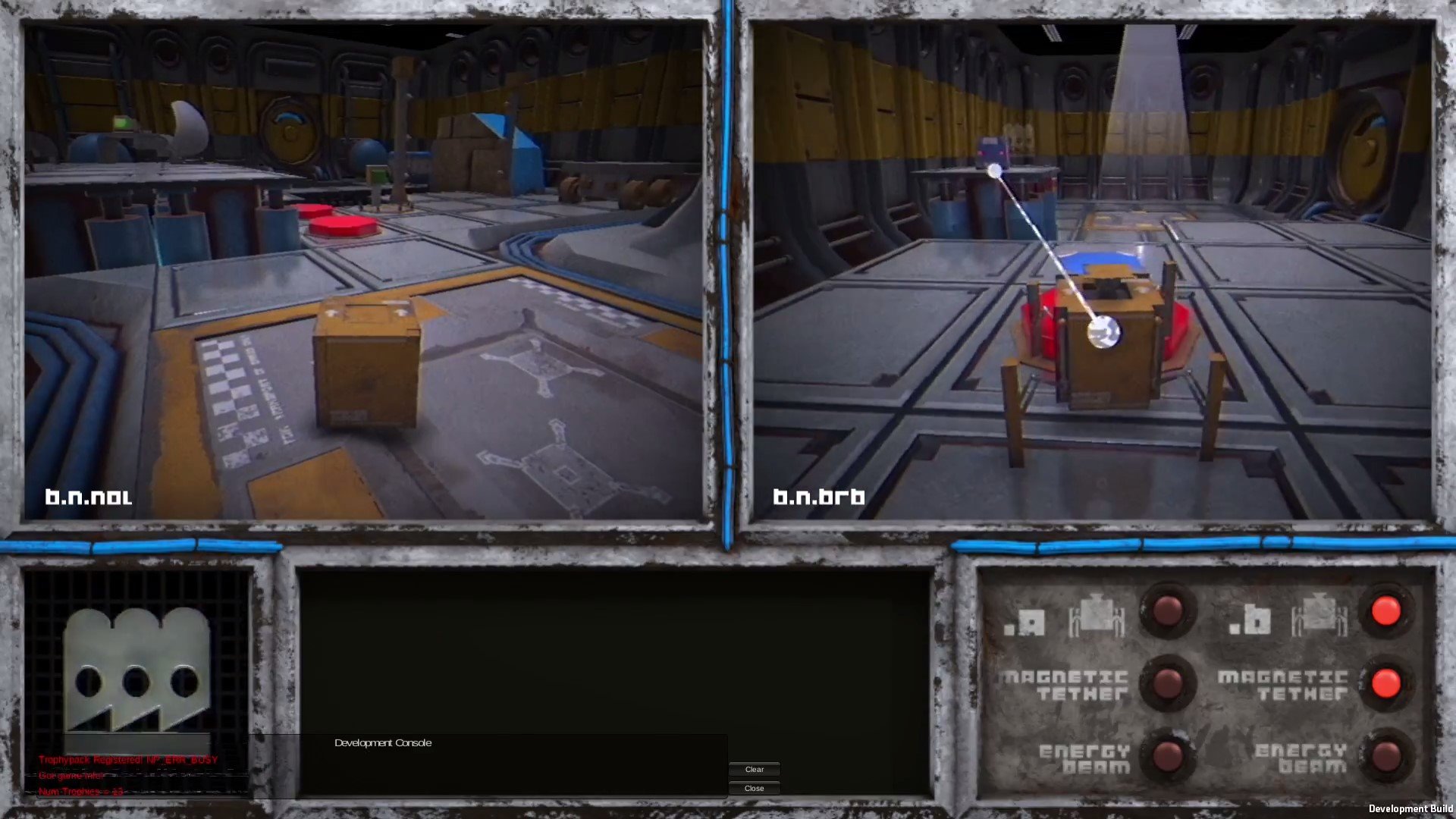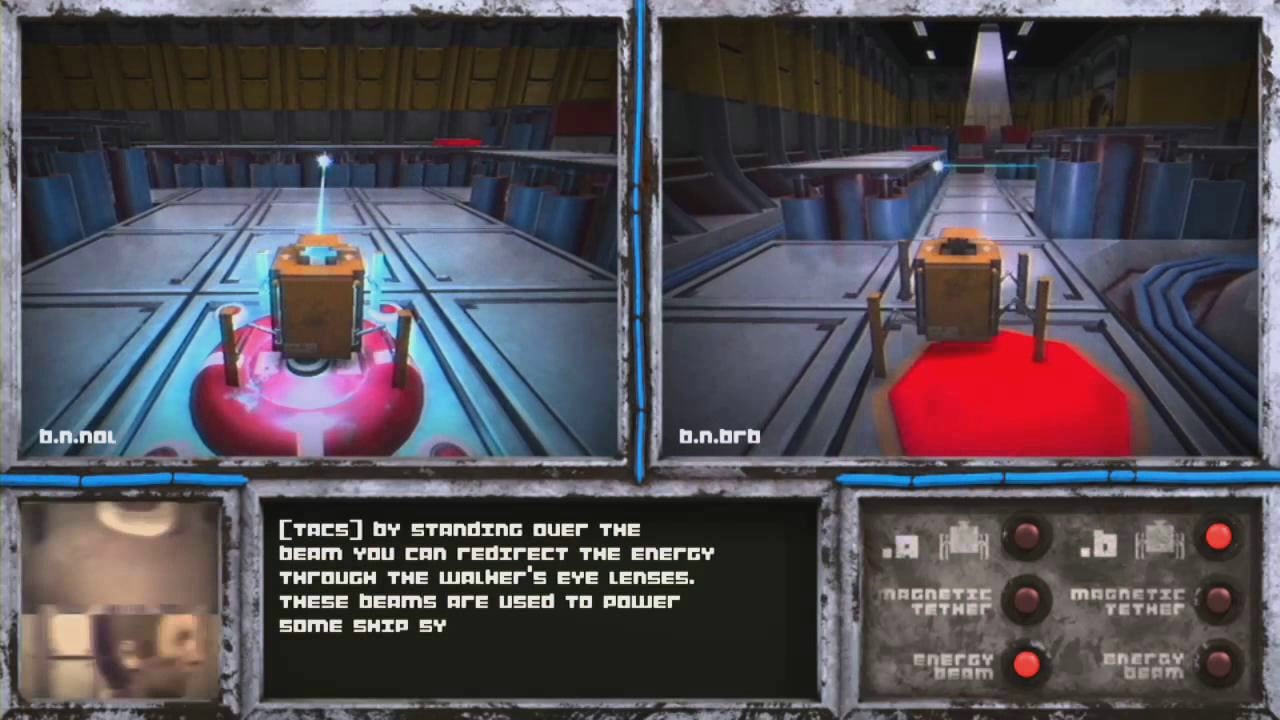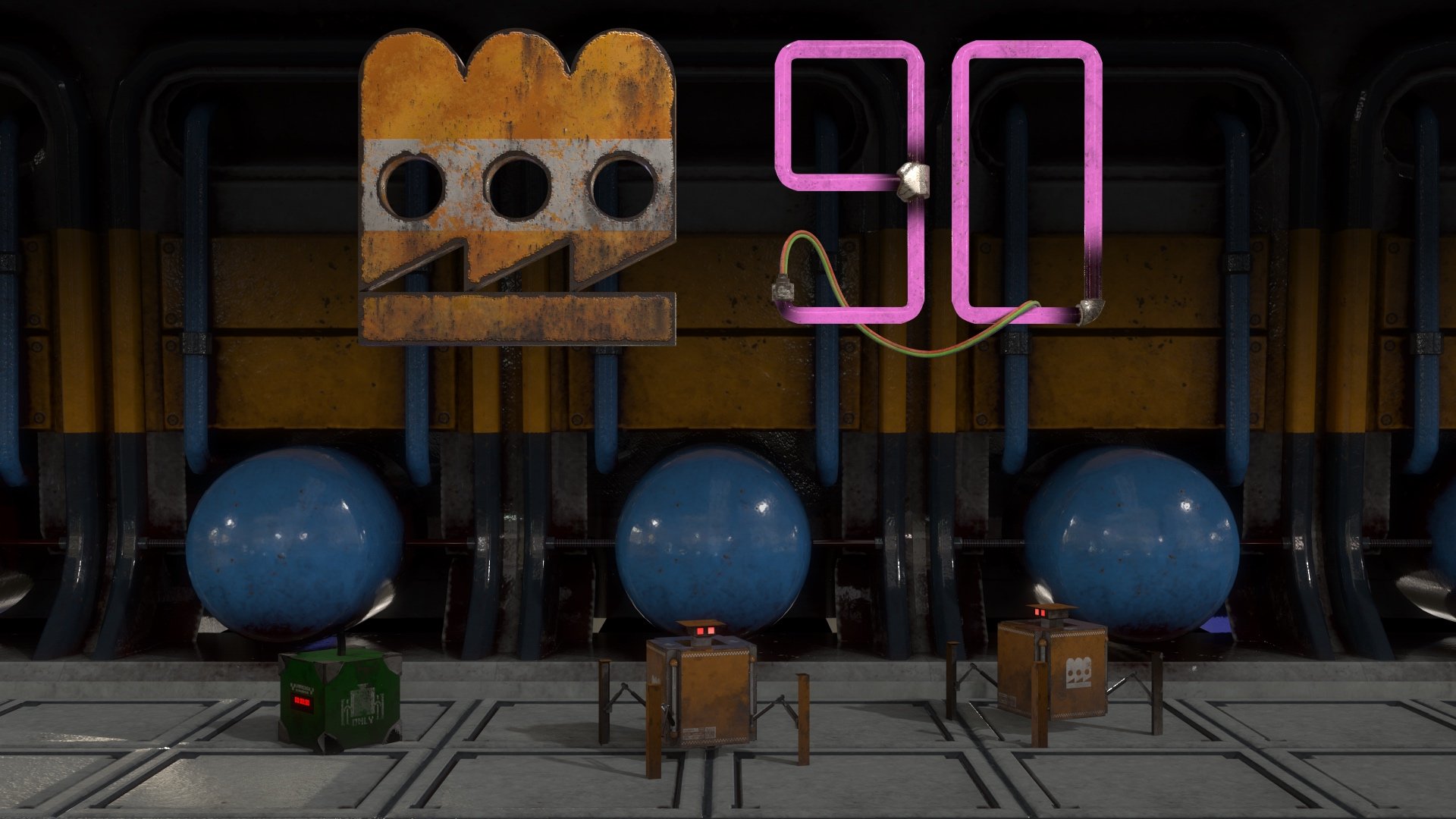Factotum 90 is a 3D puzzle game from one-man developer TACS Games, headed by Thomas Hopper, and published by Poppy Works. It began life as a Wii U exclusive, but has migrated to other consoles over time — most recently the PS4 and PlayStation Vita.
The game involves swapping between two identical box-like maintenance robots in order to navigate through a series decks on a spaceship by solving puzzles. You are guided by a man on a screen who wants you to navigate your way through the ship in order to restore the main power after a massive collision.
A basic premise for a basic concept, but more importantly, does Factotum 90 deliver an enjoyable game? The answer is both yes and no.
 Whip out your admin password and login to find out.
Whip out your admin password and login to find out.
The Good, the Bad, & the User-Friendly
While the setup and core concept are pretty basic, Factotum 90 does have some pretty nice little design ideas. Quite a few steps have been taken in order to make this game as user-friendly as possible. For example, whenever you press a switch to raise a platform, the game very kindly connects the switch and platform(s) with a translucent white line so that you know what in the room has changed. You can even re-read any dialogue that has already happened in the level from the pause screen.
The game also provides both a respawn button on top of the level reset option in the pause menu. This causes the robot you are currently controlling to respawn at the start of the level without undoing any actions that you’ve already done. This can be useful when you’ve made a mistake and find yourself stuck, or when you aren’t quite sure you’re doing things right but still don’t want to start over completely.
These lenient features make solving the puzzles feel very relaxed — and it was helped a bit by the game’s simple synth soundtrack, which is more atmospheric than anything else, but still gets the job done just fine. There is definitely a sense of satisfaction to be gleaned from completing the game’s puzzles — though they are similar to each other at times — and the difficulty curves at a steady pace the whole way through, with only the occasional head-scratcher that takes you longer than average to figure out.
 The white line in action in a simple scenario.
The white line in action in a simple scenario.
However, while these are all nice features, they can only help so much to fight against the conflicting elements of the game’s core design.
You Always Want What You Don’t Have
The biggest problems that Factotum 90 has are all things that it doesn’t have. For example, while the white line connecting the button you press to the thing it operates is a nice feature, it doesn’t solve the problem completely. Several times I saw where the line went — but due to other obstacles being in the way, I couldn’t actually see where it ended. This is especially tricky when the switch affects several things in different locations or something far away.
On several occasions, this led me to attempt to move the other robot into close range to the first bot, then have them press the button, and essentially screen-peek using the other robot to try and verify where the line ended.
And that brings me to the camera.
While you have plenty of open space to move around in, and the camera functions perfectly fine and never really gets stuck on anything, the scope of what you can see is still fairly limited. It’s difficult to get a bearing on your surroundings at times because there’s just too much keeping you from seeing very far out, such as with my screen-peeking example above.
The game could have benefited from a simple map screen, or maybe an alternative overhead camera angle of some sort which allowed you to asses your surroundings more easily, similar to something like Pikmin 3.
Additionally, most of the concepts for puzzles in the game, especially early on, are ones that you’ve more than likely seen before — and I have definitely seen some of them before. Levels constantly have you weighing down switches with boxes, redirecting laser beams, opening doors from one side to let the other droid through, and so on. This is not to say that the puzzles are badly designed, because they aren’t. The layout of each stage is completely different, but you can’t help but shake the feeling that you’ve seen it all before.
 An early level where the laser directing mechanic is introduced.
An early level where the laser directing mechanic is introduced.
It would also have been nice to have a co-op mode. Considering the fact that you’ve always got the two robots to control and you always need to switch between them, this game would have benefited greatly from a co-op mode for two players. It’s really well-suited for co-op, and having two people on hand would have helped a bit with the game’s occasionally slow pace and sometimes confusing level design.
Lastly, I have a minor thing to note regarding the game’s visuals that only seems to apply to the PlayStation Vita version. The graphics are perfectly fine for what they are on all versions, but it seems that the console versions have a slight advantage over the Vita in this regard. The PC and console versions of Factorum 90 feature a security-camera-style film filter over the screen, which I personally feel adds a bit of immersion and charm to the game’s aesthetic.
For some reason, this filter is completely absent in the Vita version, and there’s no option anywhere in game to turn it on if desired. If this omission was made because it just couldn’t be done on the Vita, that’s perfectly fine — but if it can be there, I see little reason to not include it. Maybe Thomas Hopper thought that the filter would make visibility on the already small Vita screen more difficult, but the option at least would have been nice.
A Game About Robots That Could Use More Soul
I don’t want to say that Factotum 90 is a bad game, because I did have some fun with it. But I will say that it could have been much better. The slower pace and repetition drag it down, as well as its general lack of new ideas — though it does still have a few good ideas thrown in the mix. As a game designed and developed by just one person, it’s still pretty impressive considering its budget price.
But when judging it by it’s own merits, and comparing it to other budget titles and puzzle games on the market, it’s just not that great. I do want to emphasize, though, that while I spent more time discussing the lesser aspects of Factotum 90, but there’s still a lot of good stuff to be found here.
Maybe the budgeted charm, the low price point, and the respectable amount of content will be enough to grab you — but for me it just wasn’t quite enough. If you’re looking for a cheap puzzle game it’s not a bad time, you may find the baton-pass style gameplay more interesting than I did. So Factotum may still be worth checking out if you’re a budget gamer or die-hard puzzle enthusiast.
Factotum 90 is available now for $6.00 for PC, Wii U, Xbox One, PS4, and PlayStation Vita. You can watch a trailer for the console version of the game below:
[Note: Poppy Works provided the copy of Factorum 90 used for this review.]







Published: Sep 20, 2017 10:45 pm